
Read a few articles about mathematics, math education, or a mathematician in the New York Times that form a theme. Submit a short paper that cogently expresses your thoughts about the articles. (You can write about things that interested you, questions you are left with, additional things you might want to look up, ideas you had when reading the article, whatever.) Print out the articles and your paper.
|
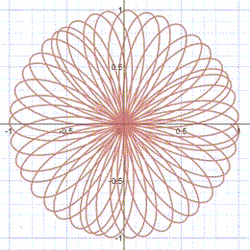
Visit Daily Desmos and find a couple of graphs that intrigue you and that seem appropriately challenging. (Some will be too easy, and some will be too hard... this is like Goldilocks.) They are categorized into basic and advanced. Now try to reproduce your chosen graphs using Desmos.com (an incredible, incredible easy-to-use online graphing calculator). Submit a comment with your answers – or the closest you could get to your answers. It's okay if you didn't *get* it! Print out the original Daily Desmos challenges, a short explanation why you thought those particular Daily Desmos challenges were of appropriate difficulty for you, and your comments that you submitted.
|

Do you like finding patterns? Did you find sequences interesting? Well if so, go to Visual Patterns and pick an appropriately challenging pattern from the hundred that are there, and try to determine the number of objects in the 43rd figure. (For full credit, you have to choose something appropriately challenging. You can ask me if you have questions!) The thing about these is there are many ways to solve these. So then come up with a second, different way to determine the number of objects in the 43rd figure. And then do this again with a third, different way. Use color and clear diagrams to explain the three different ways (on three separate sheets). Submit your different methods. Print out the visual pattern you were trying to solve, and a writeup of your logic of how you tried to find the 43rd figure in different ways, and why you thought it was an appropriately challenging pattern to work on. It’s okay if you aren’t right! I want to see your thought process!
|

Do you like creating things? Go to Visual Patterns, visit the gallery to see what other students came up with, and generate your own Visual Patterns puzzle (you can take a photograph of it). Submit your puzzle and the writeup of your solution to the website.
|
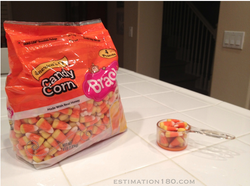
Do you like estimating how many jelly beans are in a jar? Go to Estimation 180 and pick five consecutive days of estimation challenges and take the challenge. After you submit your estimate, be sure to look at other estimates. Look at the answer. Print out the challenges, and write up five rationales as to how you came up with your three estimations, and also make sure to mention the true answer. It’s okay if you aren’t close to being right.
|

“How many unique English tweets are possible? How long would it take for the population of the world to read them all out loud?” If you like hypotheticals, go to xkcd’s what if archives and find a hypothetical that interests you and has some math involved.
Print out the what if you were intrigued by, rewrite the “solution” in your own words -- additionally being sure to explain what drew you to the hypothetical, what you found innovative/interesting about the solution, and what you were confused by in the solution. |

New York City is the home to the newly creation Museum of Math (MOMATH). Visit this museum! Submit a review of the museum. If you can, include a photograph for your review.
|

Go to Vi Hart’s youtube page or Numberphile's youtube page or Mathologer's youtube page and find three videos that spark your imagination. Watch them. For each submit a serious couple-paragraph comment that cogently expresses your thoughts about the video – what you liked about it, what confused you about it, what inspired you about it, what questions you're left wondering about. Print out a screenshot of the video and your comments.
|
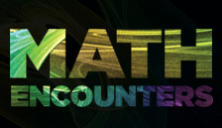
Every so often the Museum of Math (MOMATH) has lectures for the public – called “Math Encounters.” Attend one of them, and write a review of the lecture you attended. (These fill up quickly, so register early if you want to go!)
If you can't attend one, feel free to watch one of them on YouTube and write a review. |
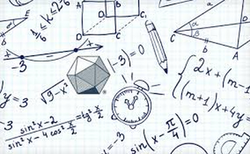
Math competitions! Depending on your school, you may have access to taking a couple different math contests. There are two common ones.
The first is a 30 minute, 6 question contest called the New York [or Illinois, or New Jersey...] Math League. Take one of these contests! When you get your results back, try to work out the problems you got wrong (but with as much time to do this as you need). Submit your contest and the reworked problems! Alternatively... The second is the American Mathematics Competition in February. Take the AMC then. If you are not able to take the AMC then, you can also get a blank copy of the test from your teacher after the competition and solve any 3 problems that interest you (excluding problems #1-8). Submit the problems and your solutions. |
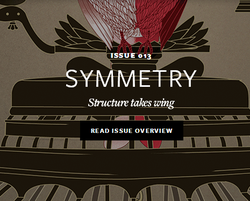
The science magazines Nautilus and Aeon and Quanta have some really interesting articles written by "big name" people that deal with mathematics (among other disciplines). Read two or three articlse about mathematics, and write a review of them. In each review, talk about what drew you to the article that you read, summarize the content of the article itself, and most importantly, write if the article changed or expanded how you understood something or if it raised interesting new questions for you.
|
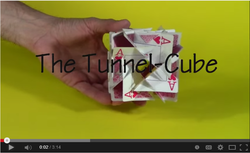
George Hart (father of Vi Hart) is a mathematical artist. Watch some of his youtube videos, look at some of his sculptures, get inspired, and create some mathematical art!
|

One vibrant online community is the math stack exchange: “a question and answer site for people studying math at any level and professionals in related fields.” It has a number of higher level math questions, but you can find high-school level questions too.
Go to this site and find an interesting question and some answers for it. (Frequently asked questions might be of interest.) Submit the problem, the answers, and a short description of what you understand about the problem and the solution. Alternatively, if there is a question about mathematics that you’ve been wondering but never understood (e.g. what does 0^0 mean, really?), post it and see if someone responds. Submit your question, and any responses you get (if any). |
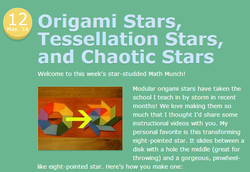
Math Munch is a ridiculously addictive weekly digest of the mathematical interesting on the internet. Go to the website and browse the archives. There are a number of things that will have you DO, MAKE, WATCH, READ, and PLAY. Find something that interests you.
DO: work on a puzzle, or solve a problem, or struggle with a problem MAKE: re-create a piece of math art, or create your own artwork inspired by the original work WATCH: watch a video and leave a comment on the site with what you learned and/or what questions you have READ: read about a mathematician, write down why this mathematician was interesting to you, and compose two questions you’d like to ask this person PLAY: play a math video game and then write a critique of it (likes, dislikes, suggestions, etc.) For each of these, print out the original post and include your work (your solution, art, comment, critique, etc.) |

There are a number of TED talks that deal with mathematics. Watch a few and write a paragraph for each explaining what you learned.
|
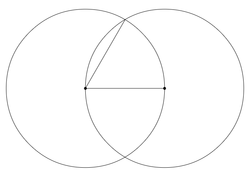
Did you ever do straightedge and compass constructions in geometry? Did you love the puzzle they provide? Use this site to solve the geometric puzzles. Solve 5 puzzles that challenge you, and take screenshots of your solutions!
|
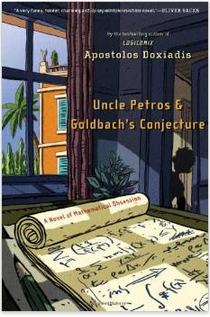
There are comics about mathematics. The graphic novel Logicomix is a dramatic story about looking for the foundations of mathematics. The novel Uncle Petros and Goldbach's Conjecture is another one about mathematical obsession. Read it, and write a book review.
|
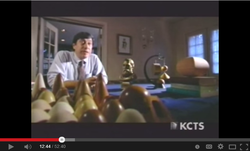
Do you like documentaries? Amazing movies about mathematicians and mathematics are online! Watch one and write a movie review.
Fermat's Last Theorem N is a Number Hunting the Hidden Dimension Beautiful Equations A Brilliant Madness High Anxieties: The Mathematics of Chaos The Genius of Srinivasa Ramanujan Infinite Secrets of Archimedes A Mathematical Mystery Tour Between the Folds |
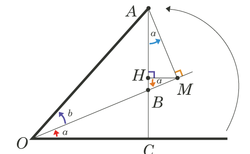
Sign up with brilliant.org and challenge yourself with some math problems! Print out a couple of interesting problems and your solutions to them.
|
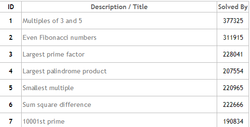
Do you like programming? Want some challenges that intertwine programming and mathematics? Solve a problem or two on Project Euler! I bet you'll get addicted! (Submit the problem and your code.)
|

New York City hosts the World Science Festival every spring. It has amazing speakers who are experts in their fields -- including mathematicians. Find a math lecture, watch it, and write a synopsis about it and your take on what was talked about.
|

Would you rather... have a stack of quarters from the floor to the top of your head OR $225?
If you like these sorts of questions, pick three from the website that seem intriguing and challenging to you. Write out three would-you-rather scenarios, your answers, and your justification. |

Paul Lockhart has written a short and famous critique about the teaching of mathematics. It begins, compellingly, "A musician wakes up from a nightmare." Read it and write your thoughts on the compelling piece. (Interesting note: the author of this famous piece is a math teacher at Saint Ann's.)
|

The ancient Greeks studied geometry through the use of a straightedge and compass. Your task is to play this addictive game (Euclid: The Game) to solve 3 of the puzzles using the straightedge and compass as the Greeks did. Solve some of the more challenging ones for you (so the first few shouldn't count... they should get you familiar with these puzzles). Take screenshots of your solutions and explain why they work.
|
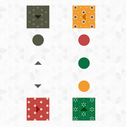
Play this addictive game about squares. If you are addicted, play some more. Finally, take a gander at some of the statistics of the game. Now here is the challenge. Develop your own challenging level. The setup, and the solution. Make sure it's on graph paper and in color. You can represent your solution by saying the order of squares you click (denoting the squares by their color).
Alternatively, Bloxorz is a crazy, maddeningly fun game. Play it. Get to a challenging level. Now try to explain to a reader how to solve it. Your challenge is to make your explanation/solution understandable. You can you words/screenshots/etc. Then try to create your own level, and a solution for it! |
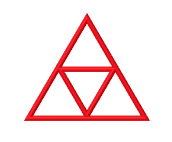
Although this website Five Triangles notes that the problems on it are for 6th, 7th, or 8th graders, the problems are conceptually interesting. (Personally, I'm in love with them!) Pick two that interest you and write up a solution for both. The number of stars represent the difficulty level. Pick some at the difficulty level that you feel is appropriate for you.
|
|
Do you know a mathematician? Physicist? Architect? Engineer? Finance wizard? Computer programmer? Do you want to possibly be someone who uses math in their jobs?
Want to know what math is like a the college level? Do you know a junior or senior in college who has taken a lot of math courses? Do an interview with someone in college who has taken a lot of math classes, or someone who uses mathematics regularly in their jobs. Ask them what you're interested in finding out! Transcribe the interview. |
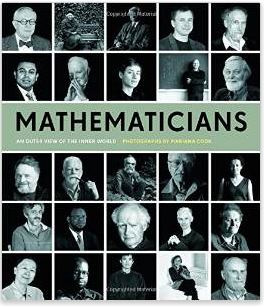
Curious about how mathematicians see the world? What they work on? Why they care about working on such abstract things?
The math department has a copy of this book ("Mathematicians: An Outer View of the Inner World") which has famous modern mathematicians write a single page. Talk with me and you can definitely borrow the book for a night. Read about four mathematicians, and write a response to what you read. What resonated with you, what felt strange to you, what questions or thoughts did you have. |
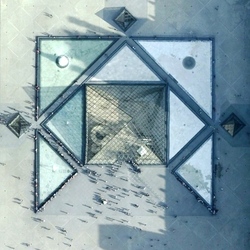
Do you like photography? Daily Overview is a site with beautiful aerial photos of interesting places in the world. And embedded in these photos is mathematics. Pick a few photos that captivates you that you see some mathematics hidden in it. Do some mathematics. Maybe throw the photos in Geogebra. Write about the mathematics you see in the photos. In other words, analyze the photographs as pieces of art, but using a mathematical lens/framework.
|
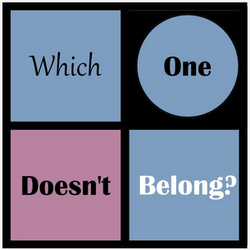
"Which one of these is not like the other?" Except in every set of four things, each one can be the odd duck! Check out this site, and then come up with three sets of your own WODB -- one for shapes, one for numbers, and one for graphs. Submit them to the site (here). Print out your submissions, and write up an explanation for how each of your objects can be the one which doesn't belong.
|

The site ACME Science has a podcast called "Strongly Connected Components" which conducts interviews with famous mathematicians and scientists. Listen to a podcast that involves mathematics. After you listen, write an email to the mathematician(s) being interviewed. You don't need to send your email, but you are welcome to!
|

Are you a poet? Watch this compelling math poem written and read by Harry Baker about the number 59. Then write your own long poem -- or a few short poems -- about a number, a mathematical idea (infinity? asymptotes? matrices? sine? circles?), or a theorem or formula (Pythagorean theorem?). Though it isn't required, it would be extra cool if you could make an audio recording of you (or someone else) reading your poem(s) aloud!
|

Do you like math and art? Adult coloring books are the new rage. Here is one that is math-based! (Your math teacher may have a copy of it if you want to check it out; yes, it is awesome.) Pick one or two of the images and have a relaxing and zen time coloring the designs in. Be creative! Just remember you still have to do math -- so do a little research on the math part of the design (the book will help you with this, as will I) and write a short two paragraph text that would hang next to your colored art piece in a museum! (We will hang your art piece on the bulletin board outside the math office!)
|
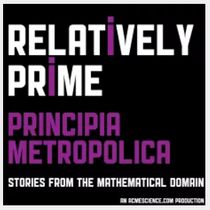
Are you a podcast person? Me too! Listen to a Relatively Prime podcast and write a summary of what you learned! Are you someone who is interested in audio journalism? Create your own short (or long!) podcast about something mathematical that you are interested in. Or interview someone else about mathematics (an architect? a teacher? a student? an astronomer?) and slice and dice it into a podcast! Or finally if you're interested in math education, listen to a MathEd Out podcast and write up your thoughts on what you heard!
|
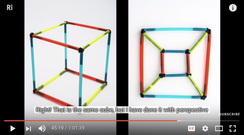
Do you want to learn about the fourth dimension, so that you'll actually understand it? Do you want to laugh? This one hour public lecture by Matt Parker blows my socks off. Watch it, and actually do something based on what he does! Build something. Learn more about a Klein bottle. Knit a mobius hat. Build a hypercube. Solve one of the puzzles he presents. Email Matt Parker with questions you have based on the video. Whatever! Seriously this is one of the most enjoyable math videos I've ever seen. I think you'll love it. (Other Royal Institution videos you might want to watch and be inspired by are: How Not To Be Wrong and Birth Of A Theorem.)
|

Mathematician Zack Abel makes cool math sculptures out of paperclips, binderclips, and other things he has lying around. Go to his site, get inspired, and try designing one of your own mathematical sculptures. Yes, it can mimic one of his sculptures, but it also can be one of your invention! Be sure to photograph your construction/process so we not only will have a finished piece but also a timelapse of how it was made!
|
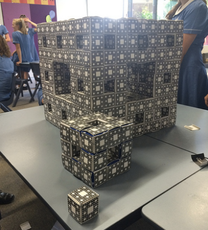
Check this shizz out. It's a crazy 3D fractal known as the Menger Sponge. Find a partner and work together on building it! Instructions are on this site. I can help you get the pieces on cardstock and we have a papercutter you can (carefully) use. We'll display it publicly somewhere. Then do a bit of googling to find out what interesting properties the Menger Sponge has. You. Will. Be. Impressed.
|

Usually when people think of mathematicians, they get a picture in their heads of old white dudes. But there are many mathematicians who aren't old white dudes. A friend has started compiling a list of some of them (a few more are here and here and here and here too). Pick two of them (either from that site, or that you learned about elsewhere) that pique your interest, do some google-fu on them and learn a bit about themselves and their mathematics. Create a short presentation (google presentation is fine) with images and lots of information about what you found out. You'll present it to our class! All I ask is for a five minute presentation non-snooze-fest.
|
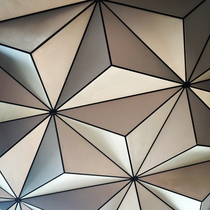
Do you like photography? Do you sometimes see math in the world around you? If so, take a series of five photographs and get them printed. Attached to each one, neatly fill out a medium size index card explaining the math illustrated or evoked by your photograph. We will post these publicly for all to see! (You may find some inspiration here and here.
|

Play With Your Math! Heck, these are crazy awesome problems that you can get obsessed with. They start out seeming simple and then... BAM! You're engrossed. Pick two of them and work on them, and share your thinking/progress in some way (writing? writing with photographs? interpretative dance?). It's totally okay if you don't solve them. I honestly just want to see you have fun playing with your math!
|
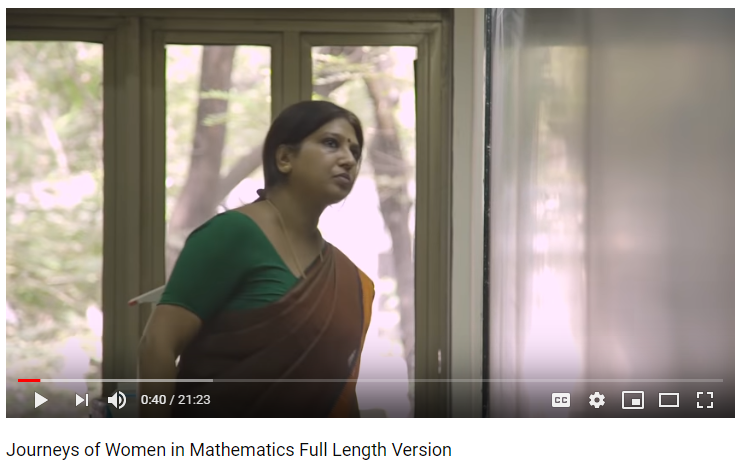
Here is a 20 minute video about the journeys that women have in mathematics (created by the International Math Union). Watch it. Do some research on the number of women in mathematics at various levels of education. Why do you think, based on the video and based on your own knowledge, that there is an underrepresentation of women in mathematics? What do you think can be done, based on the video and your own ideas, to change this?
|
